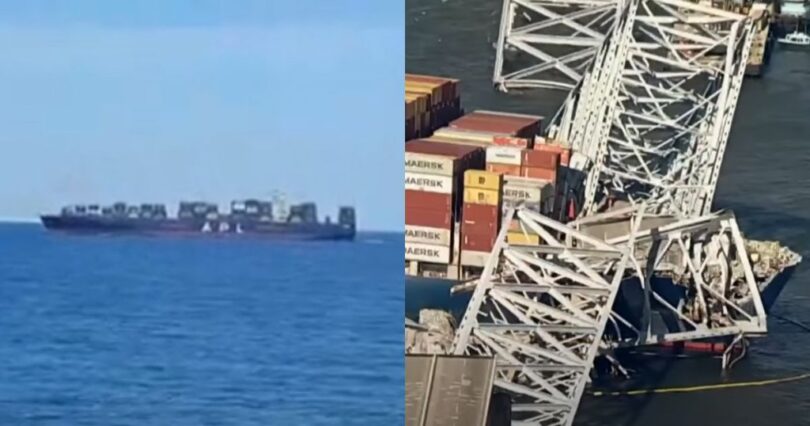Internet Calls Out Eerie Similarities Between Container Ship That Lost Power Just 12 Days After The One That Caused Francis Scott Key Bridge Collapse
A massive container ship experienced a power loss on Friday near New York City’s Verrazzano Bridge, occurring less than two weeks after a cargo vessel collided with Baltimore’s Francis Scott Key Bridge.
The container ship APL Qingdao, weighing a staggering 89,000 tons, experienced a loss of propulsion around 8:30pm while navigating through New York Harbor, The Daily Mail reports.
Notably, the cargo ship Dali, which collided with one of the supports of the Francis Scott Key Bridge, had also lost propulsion before the crash.
The similarities between both ships losing power sparked a lot of confusion and speculation on social media. With some users asking for information on whether foul play should be considered, or if the incidents being so close to one another was merely a coincidence.
John Konrad, CEO of maritime-focused news outlet gCaptain, shared an image on X showing the 1,100-foot APL Qingdao floating uncomfortably close to the span that connects Brooklyn and Staten Island.
“Didn’t the Dali container ship that hit the Francis Scott Key bridge in Baltimore ALSO “lose power” temporarily before smacking into it, causing the whole thing to collapse???” wrote The Patriot Voice on X.
“Was this ship on the same course to take out the Verrazano bridge??? I definitely can’t say for sure, but it is awfully peculiar that these two massive ships BOTH ‘lost power’ near the foundation of MAJOR bridges,” he added.
“Last I checked, I don’t think it’s a common occurrence for these container ships to “lose power” randomly,” the account added. “Unlike the Dali, 3 tug boats were being utilized in the NYC Harbor at the time of the incident, and 3 more were needed to bring the ship back into control.”
“It’s the very least it is a VERY strange, and off putting coincidence,” he concluded.
Journalist and political analyst Andrea Tantaros wrote, “For most, I believe this news will prove unsettling, coincidental, and far too soon following the Baltimore – Key Bridge incident.”
Other accounts questioned the timing of both incidents, weighing in on X to share theories and question the normality of ships losing power.
The Coast Guard said it “received a report from the M/V APL Qingdao around 8:30pm, Friday, that the vessel had experienced a loss of propulsion in the Kill Van Kull waterway. The vessel regained propulsion and was assisted to safely anchor in Stapleton Anchorage, outside of the navigable channel just north of the Verrazano Bridge, by three towing vessels.”
“These towing vessels were escorting the vessel as a routine safety measure, which is a common practice for large vessels departing their berth,” the Coast Guard added.
The Coast Guard mandated certification of the vessel’s propulsion system to ensure that it had undergone repairs and was fully operational.
The crew was also obligated to furnish a detailed casualty report, documenting precisely what factors contributed to the loss of propulsion. Following compliance with these requirements, the vessel was permitted to proceed with its voyage to Charleston, South Carolina.


Leave a Comment